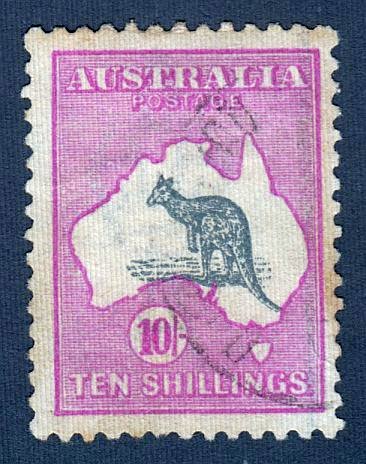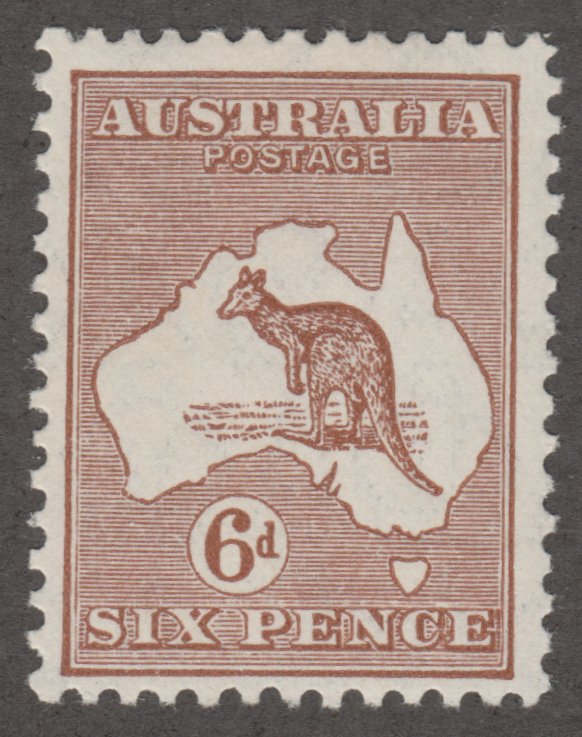
Discussion - Member to Member Sales - Research Center

Discussion - Member to Member Sales - Research Center


11:38:20pm

Login to Like
this post
We're looking at a props department's artefacts here, of course, and not items intended for close scrutiny.
The date on the cds of the handwritten one seems to read 1956 or 58 - others will judge whether the cds is correct for pre-1936 envelopes. That typewriter has a notably smooth line - no slightly raised capitals as you might expect from early 20th century models.
The ½d green stamp on the envelopes would not have been much use - rates for most of George V's reign were 1½d for a small letter.
Our GB specialists will undoubtedly spot even more glaring errors - although I doubt whether the props department will be too worried! In fact, there are probably some errors in what I've written above...

Login to Like
this post

04:34:16am
Mr. Hercule Poirot,
56B Whitehaven Mansions
Sandhurst Square,
Lonndon W1,
Great Britain, N1 1BE (???)
The fictional Hercule Poirot lived at Whitehaven Mansions - actually a location at Charterhouse Square was used, in London as the setting. Around the square are several buildings and one called Florin Court, is known as the fictional Whitehaven Mansions. The address is as well known to Christie aficionados and to tourists as the 221B Baker Street address, both of which are answers to queries in the Trivial Pursuit game.. A visit to London without at least a short tour of the areas, either, or both, would be a terrible waste of the opportunity.

Login to Like
this post
I have wondered about this, do we know which movie(s) these screen shots are from?
In addition to stamps, I am a "Poirot junkie." David Suchet IS the best Poirot.
I recently watched (again) one of my favorites, "The Cat Among the Pigeons."
BOB

Login to Like
this post
If I read Stanley Gibbons GB Concise catalogue correctly, and working bottom to top on the screenshots of the covers, the following information may aid in judging the authenticity or otherwise of the covers.
The dark green 1/2d King George V stamp was issued Nov. 17, 1934, and would have been largely superseded in use by the 1/2d King Edward VIII stamp issued Sept. 1, 1936 but until that date would have been current.
The light brown 1 1/2d King George V was originally issued Oct. 15, 1912 and reissued with a different watermark in 1934, and would have been in common use until superseded in use by a dark brown 1 1/2d King George V issued August 20, 1934, which was in turn superseded by the 1 1/2d King Edward VIII stamp issued Sept. 1, 1936.
The red 1d King George V stamp was issued Oct. 8, 1912 and reissued with a different watermark in 1934. It would have been in use until superseded by a much deeper red 1d issued Sept. 24, 1934, which in turn was superseded by the 1 1/2d KIng Edward issued Sept. 1, 1936.
It appears to my sight that the postmarks on the 1 1/2d cover might be Aug 31, 1936 and on the 1d cover August 11, 1936. If so, then the stamps appear to be "late usages" rather than strictly contemporary ones for the respective stamps which would have been available but not the ones most currently in use.
I cannot read the postmarks on the covers with the 1/2d stamps but if they had been similar they might well be "in period" usage.
The 1/2d rate was for printed papers; the 1 1/2d rate was for domestic (inland) letters.
I am not knowledgeable enough about the styles of the postmarks to know if they match "in period" use or not.
I hope this helps in your inquiry about authenticity.
J. T. Hurd.

Login to Like
this post
The cancels look completely wrong to me. A machine cancel with a randomly placed CDS? The CDS itself does not look like anything I have seen.

Login to Like
this post
They who would give up essential Liberty, to purchase a little temporary Safety, deserve neither Liberty nor Safety. -Benjamin Franklin
15 Sep 2015
11:38:20pm
these 2 screen caps are from an episode. How authentic do they appear?

Login to Like
this post

re: How authentic are the covers shown on the series Agatha Christie's Poirot?
We're looking at a props department's artefacts here, of course, and not items intended for close scrutiny.
The date on the cds of the handwritten one seems to read 1956 or 58 - others will judge whether the cds is correct for pre-1936 envelopes. That typewriter has a notably smooth line - no slightly raised capitals as you might expect from early 20th century models.
The ½d green stamp on the envelopes would not have been much use - rates for most of George V's reign were 1½d for a small letter.
Our GB specialists will undoubtedly spot even more glaring errors - although I doubt whether the props department will be too worried! In fact, there are probably some errors in what I've written above...

Login to Like
this post
Silence in the face of adversity is the father of complicity and collusion, the first cousins of conspiracy..
16 Sep 2015
04:34:16am
re: How authentic are the covers shown on the series Agatha Christie's Poirot?
Mr. Hercule Poirot,
56B Whitehaven Mansions
Sandhurst Square,
Lonndon W1,
Great Britain, N1 1BE (???)
The fictional Hercule Poirot lived at Whitehaven Mansions - actually a location at Charterhouse Square was used, in London as the setting. Around the square are several buildings and one called Florin Court, is known as the fictional Whitehaven Mansions. The address is as well known to Christie aficionados and to tourists as the 221B Baker Street address, both of which are answers to queries in the Trivial Pursuit game.. A visit to London without at least a short tour of the areas, either, or both, would be a terrible waste of the opportunity.

Login to Like
this post
re: How authentic are the covers shown on the series Agatha Christie's Poirot?
I have wondered about this, do we know which movie(s) these screen shots are from?
In addition to stamps, I am a "Poirot junkie." David Suchet IS the best Poirot.
I recently watched (again) one of my favorites, "The Cat Among the Pigeons."
BOB

Login to Like
this post

re: How authentic are the covers shown on the series Agatha Christie's Poirot?
If I read Stanley Gibbons GB Concise catalogue correctly, and working bottom to top on the screenshots of the covers, the following information may aid in judging the authenticity or otherwise of the covers.
The dark green 1/2d King George V stamp was issued Nov. 17, 1934, and would have been largely superseded in use by the 1/2d King Edward VIII stamp issued Sept. 1, 1936 but until that date would have been current.
The light brown 1 1/2d King George V was originally issued Oct. 15, 1912 and reissued with a different watermark in 1934, and would have been in common use until superseded in use by a dark brown 1 1/2d King George V issued August 20, 1934, which was in turn superseded by the 1 1/2d King Edward VIII stamp issued Sept. 1, 1936.
The red 1d King George V stamp was issued Oct. 8, 1912 and reissued with a different watermark in 1934. It would have been in use until superseded by a much deeper red 1d issued Sept. 24, 1934, which in turn was superseded by the 1 1/2d KIng Edward issued Sept. 1, 1936.
It appears to my sight that the postmarks on the 1 1/2d cover might be Aug 31, 1936 and on the 1d cover August 11, 1936. If so, then the stamps appear to be "late usages" rather than strictly contemporary ones for the respective stamps which would have been available but not the ones most currently in use.
I cannot read the postmarks on the covers with the 1/2d stamps but if they had been similar they might well be "in period" usage.
The 1/2d rate was for printed papers; the 1 1/2d rate was for domestic (inland) letters.
I am not knowledgeable enough about the styles of the postmarks to know if they match "in period" use or not.
I hope this helps in your inquiry about authenticity.
J. T. Hurd.

Login to Like
this post

re: How authentic are the covers shown on the series Agatha Christie's Poirot?
The cancels look completely wrong to me. A machine cancel with a randomly placed CDS? The CDS itself does not look like anything I have seen.

Login to Like
this post

